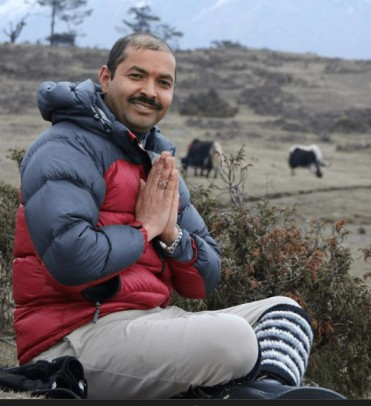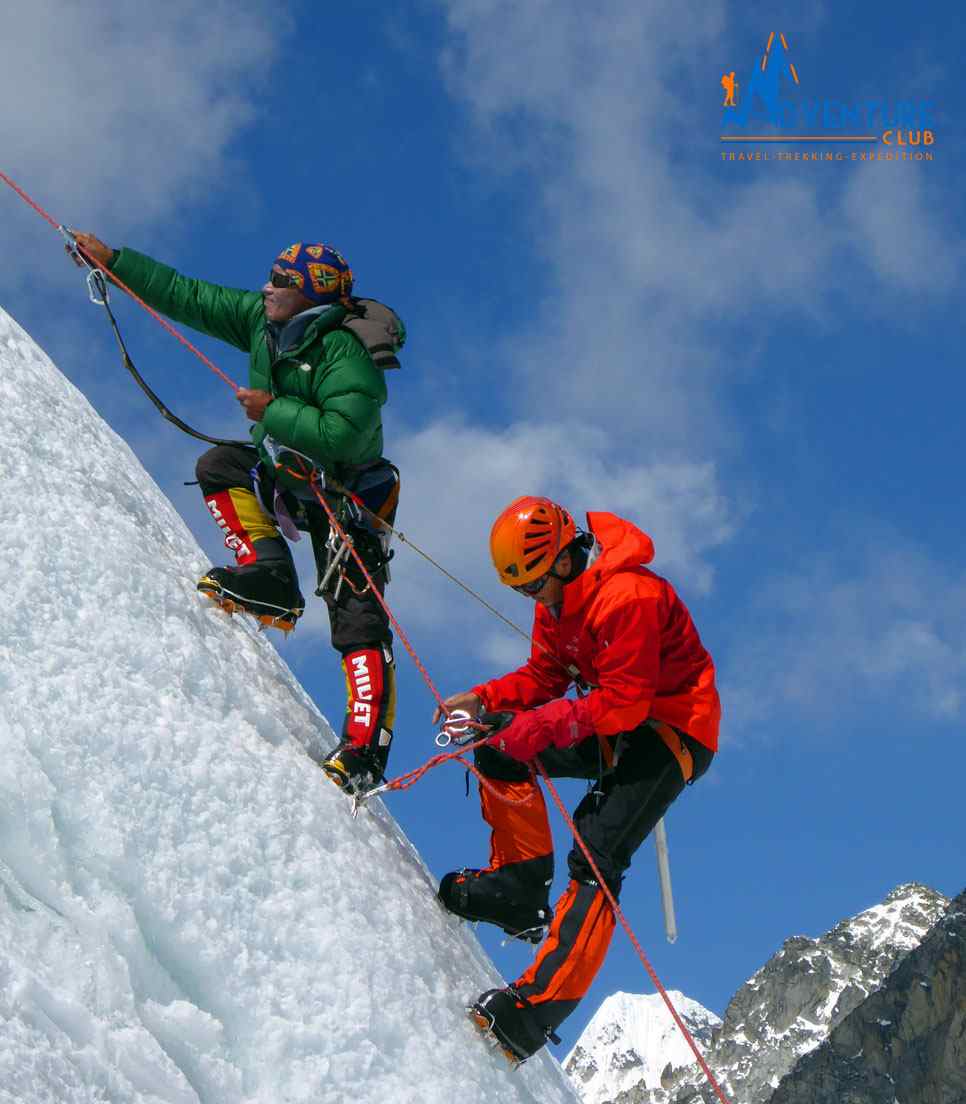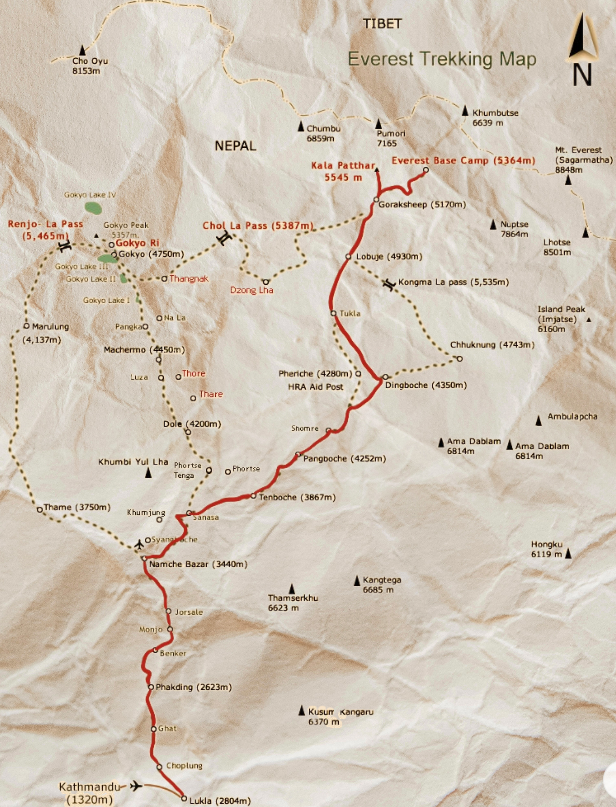At a Glance
Overview
Lobuche Peak Climbing is an exciting and challenging adventure for experienced trekkers and climbers. The peak is located in the Khumbu region of Nepal, near Mount Everest, and is one of the most popular trekking peaks in the area. It offers stunning views of the surrounding Himalayan peaks and is a great opportunity for climbers to test their skills and endurance.
The climb to Lobuche Peak involves technical mountaineering skills and requires a high level of physical fitness and acclimatization to the high altitude. The ascent includes steep snow and ice slopes, narrow ridges, and rocky sections. The final ascent to the summit is challenging and requires the use of crampons, ice axes, and ropes.
The Lobuche Peak Climbing trip typically takes around 18-20 days and includes a trek to the Everest Base Camp, which allows climbers to acclimatize and enjoy the stunning scenery of the Khumbu region. The trek also includes a visit to the beautiful village of Gorak Shep and the famous viewpoint of Kala Patthar, which offers panoramic views of Mount Everest and the surrounding peaks. The climb to Lobuche Peak begins from the village of Lobuche and involves a gradual ascent to the high camp. From there, climbers will make the final ascent to the summit, which is the highest point of the peak. The descent is equally challenging and requires careful attention to safety and technical skills.
The Lobuche Peak Climbing trip is a challenging and rewarding adventure that offers the opportunity to experience the beauty and grandeur of the Himalayan Mountains. It is an unforgettable experience for those who love mountaineering and are up for the challenge.
Important Note:
Physical fitness: Lobuche Peak Climbing is a challenging adventure that requires a high level of physical fitness and endurance. It is recommended that you train for several months prior to the climb.
Altitude sickness: The climb involves exposure to high altitude, which can cause altitude sickness. It is important to acclimatize properly and pay attention to any symptoms of altitude sickness.
Mountaineering skills: The climb involves technical mountaineering skills such as using crampons, ice axes, and ropes. It is recommended that you have prior mountaineering experience or take a training course before attempting the climb.
Weather conditions: The weather in the Himalayas can be unpredictable, and it is important to be prepared for changing weather conditions.
Permits: Climbing Lobuche Peak requires a climbing permit from the Nepalese government, as well as a trekking permit for the Khumbu region.
Gear and equipment: It is important to have the proper gear and equipment for the climb, including warm clothing, a sturdy backpack, a sleeping bag, a tent, and mountaineering gear such as crampons and ice axes.
Local regulations: It is important to follow local regulations and respect the local culture and environment during the climb.
Itinerary
Day 1
Upon arrival in Kathmandu, you'll be greeted by a representative from the Adventure Club and transferred to your hotel. You'll have the rest of the day to explore the city and prepare for the climb.
Day 2
You'll take a scenic flight from Kathmandu to Lukla, where you'll begin your trek. From Lukla, you'll walk to the village of Phakding, where you'll spend the night.
Day 3
You'll continue trekking through the picturesque Khumbu region to Namche Bazaar, the gateway to the Everest region. Along the way, you'll enjoy stunning views of the Himalayan peaks and pass through traditional Sherpa villages.
Day 4
To help your body adjust to the high altitude, you'll spend a day in Namche Bazaar. You can use the day to explore the town, visit the local market, or take a short hike to a nearby viewpoint.
Day 5
You'll continue trekking through the beautiful Khumbu region to the village of Tengboche, where you'll visit the famous Tengboche Monastery and enjoy panoramic views of the Himalayan peaks.
Day 6
You'll trek to the village of Dingboche, passing through beautiful alpine landscapes and enjoying views of Ama Dablam and other Himalayan peaks.
Day 7
You'll spend another day in Dingboche to help your body adjust to the high altitude. You can take a short hike to a nearby viewpoint or simply relax and enjoy the beautiful surroundings.
Day 8
You'll continue trekking through the Khumbu region to Lobuche, where you'll spend the night and prepare for the climb.
Day 9
Today, you'll trek to the iconic Everest Base Camp, located at the foot of the world's highest peak. Along the way, you'll enjoy stunning views of the Khumbu Icefall and other Himalayan peaks. After spending some time at the base camp, you'll return to Gorak Shep for the night.
Day 10
You'll wake up early to hike to the top of Kala Patthar, a stunning viewpoint that offers panoramic views of Mount Everest and the surrounding peaks. After enjoying the views, you'll trek back to Lobuche for the night.
Day 11
Today, you'll begin the climb to Lobuche Peak. You'll trek to the base camp and spend the night, preparing for the ascent.
Day 12
Today, you'll climb higher toward the summit of Lobuche Peak as you make your way from the base camp to the high camp. The trek is challenging as the trail becomes steeper and the altitude increases. You'll spend the night at the high camp, resting and acclimatizing for the next day's climb to the summit.
Day 13
Today is the most challenging day of the climb as you'll make the final push to the summit of Lobuche Peak. You'll start early in the morning and ascend to the summit, enjoying breathtaking views of the surrounding Himalayan peaks. After spending some time at the summit, you'll descend back to the base camp.
Day 14
This day serves as a contingency in case of bad weather or any other unforeseen circumstances that may delay the climb.
Day 15
After the successful climb of Lobuche Peak, you'll trek back down to the village of Pheriche, where you'll spend the night.
Day 16
You'll continue trekking through the Khumbu region to Namche Bazaar, where you'll spend the night.
Day 17
You'll trek back to Lukla, where you'll spend your final night in the Khumbu region.
Day 18
You'll take a scenic flight back to Kathmandu, where you'll have some free time to explore the city and do some souvenir shopping.
Day 19
Today you will have a full day of sightseeing in Kathmandu Valley for World Heritage Sites such as Swayambhunath Stupa, Patan Durbar Square, Pashupatinath Temple, and Swayambhunath Stupa. At end of the day, you will back to your staying hotel.
Day 20
You'll be transferred to the airport for your departure flight, marking the end of your Lobuche Peak Climbing adventure. Adventure Club hopes to see you again for your next adventure in Nepal.
Faqs
Lobuche Peak Climbing is a mountaineering adventure in the Khumbu region of Nepal, near Mount Everest. It involves a trek to the Everest Base Camp, followed by a technical climb to the summit of Lobuche Peak.
The climb typically takes around 18-20 days, including a trek to the Everest Base Camp and acclimatization periods.
Lobuche Peak Climbing is a challenging climb that requires a high level of physical fitness and mountaineering skills. The climb involves steep snow and ice slopes, narrow ridges, and rocky sections, and the final ascent to the summit is technically challenging.
Climbers are required to have the proper gear and equipment for the climb, including warm clothing, a sturdy backpack, a sleeping bag, a tent, and mountaineering gear such as crampons and ice axes.
It is recommended that climbers have prior mountaineering experience or take a training course before attempting the climb.
The best time to climb Lobuche Peak is during the spring (March to May) and autumn (September to November) seasons when the weather is stable and visibility is good.
Yes, climbers are required to obtain a climbing permit from the Nepalese government, as well as a trekking permit for the Khumbu region.
With proper preparation, acclimatization, and attention to safety, climbing Lobuche Peak can be a safe and enjoyable adventure. However, climbers should be aware of the risks associated with high altitude and mountaineering and take appropriate precautions.





